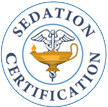Reversal Agent for Narcotics – Narcan
Naloxone Hydrochloride (Narcan)
|
Route |
Onset of Action |
Peak Effect |
Duration of Action |
|---|---|---|---|
|
IV |
1-2 minutes |
5-15 minutes |
1-4 hours |
Description:
- A pure opioid antagonist with no agonist activity.
- It reverses respiratory depression, hypotension, hypercapnia, sedation, and euphoria associated with the administration of narcotics.
Dosage/Administration
NARCAN injection is available as a sterile solution for intravenous, intramuscular and subcutaneous administration in three concentrations:
- 0.02 mg of naloxone hydrochloride per ml
- 0.4 mg of naloxone hydrochloride per ml
- 1 mg of naloxone hydrochloride per ml
pH is adjusted to 3.5 ± 0.5 with hydrochloric acid.
Adult:
Initial dose: 0.04 mg – 2 mg titrated in small increments. Dilute 0.4 mg amp of Narcan to 10cc total volume. This will be 0.04 mg or 40 mcg per cc. Give this reversal 1cc at a time, with at least 2-3 minutes between doses. This titration will allow one to bring the patient up to a safe respiratory rate without reversing analgesia or causing severe CV problems. If no response is observed after 2 mg has been administered, the diagnosis of narcotic induced toxicity should be questioned. Total dosage for nursing administration – 2 mg.
Pediatric:
Initial dose: 0.01 mg. If initial dose does not result in desired clinical reversal, administer a subsequent dose of 0.01 mg. If this does not result in desired effect, administer 0.1mg/kg. Total dosage for nursing administration in pediatric patients is: 0.2 mg/kg.
Adverse Reactions
- Respiratory effects – pulmonary edema
- Cardiovascular effects – hypotension, hypertension, arrythmias, ventricular tachycardia, ventricular fibrillation
- CNS effects – excitement, tremors, seizures, reversal of analgesia.
- GI – nausea, vomiting.
- Special considerations – titrate slowly to desired effect. Complete reversal from higher doses will result in total reversal of analgesia with other effects including hypertension, excitation, tachycardia. Monitor the patient closely in the post-procedure period for re-sedation. Additional doses of Naloxone may be required.
If the initial sedative/narcotic is properly titrated to effect, reversal should not be needed. However, if it is needed, usually small doses are adequate.
The larger doses found in resources are indicated for significant overdoses as seen in obtunded/comatose patients.
